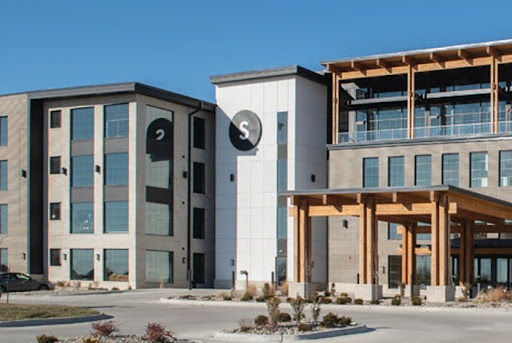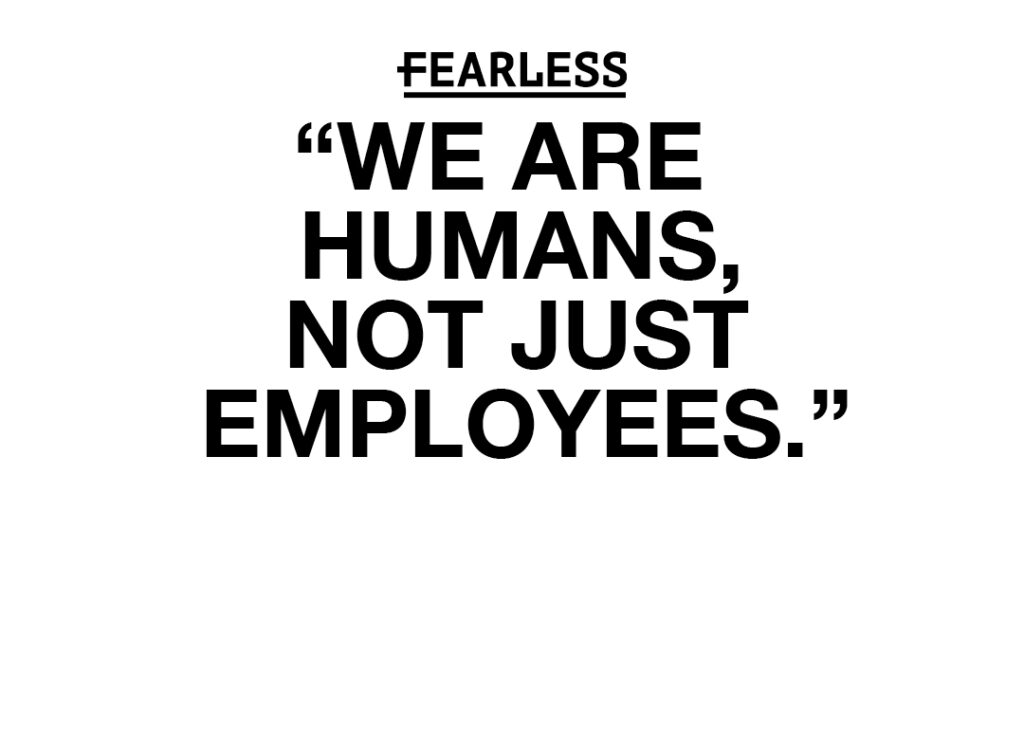2019 Commercial Real Estate Forum takeaways
Staying agile during days of disruption

KENT DARR May 2, 2019 | 3:38 pm
8 min read time
1,872 wordsBusiness Record Insider, Real Estate and Development
Generations are colliding in the office, at the apartment complex, in the retail marketplace. Technology and data are changing our notions of what sells, where it sells, and how it is delivered. One of these days, fuel for your automobile might be delivered at home, provided you’re still driving.
If you are connected to commercial real estate — brokers, designers, developers, owners — chances are you can feel the earth move, just as you would expect in an industry that is among the first to feel the initial rumblings of social, economic and demographic changes.
The Business Record’s annual Commercial Real Estate Trends & Issues forum brought together five people on April 25 who spend a good part of their days and nights reading the signs of change and determining how to deal with them.
Jake Christensen, president of Christensen Development, Niki DePhillips, senior vice president of store development for Kum & Go, Adam Kaduce, senior vice president with R&R Realty Group, Laura Rowley, president of Rough Meadow Digital, and Kris Saddoris, vice president of multifamily development for Hubbell Realty Co., shared their thoughts on how the Greater Des Moines market is dealing with change and what to expect in the way of trends touching our region.
Business Record publisher Chris Conetzkey moderated the hourlong discussion.
Elevating the experience
We’re not certain that the contemporary shopper expects an out-of-body experience before slipping into a pair of size 13 snow boots, but providing experiences of a more temporal kind is a key consideration in the retail, office and housing markets.
Niki DePhillips of Kum & Go said the convenience store giant is focused on improving experiences at the store — sustainable materials, better lighting, cutting that last mile of delivery for products that could be consumed within one hour of purchase (solving that riddle could prove disruptive in and of itself) — but also at the Krause Gateway Center in downtown Des Moines.
Kum & Go spent a lot of time and money trying to figure out how to make its employees — called associates at Kum & Go — comfortable in a range of environments that include conference rooms that are neither too large nor too small and providing the right amount of underground, weather-relieved parking for the 85% of the Kum & Go workforce that might be in the office on any given day.
There is more. Millennials are entering the workforce apparently with the thought in mind that they can work in settings that are chameleon-like. There is no assigned seating at the Krause Gateway Center, so work gets done wherever it gets done.
“The freedom of this is that associates can choose; they have the choice and control to choose how they go about doing their work, and what type of space that supports whatever tasks that they have. As millennials are graduating and so forth, and coming into the workforce, they are used to being able to work from a coffee shop, or work in the library, or go work with their friends, maybe in some type of hotel space that they have within their campus living. We wanted to provide a lot of different options for associates,” DePhillips said.
If you get the feeling that Kum & Go execs understand what they are up against in the fight for talent, you would be right.
R&R Realty Group is tailoring its office spaces to accommodate tenants who might be in competition with Kum & Go.
“The trend that we’re really watching is a talent war right now out there,” said Adam Kaduce of R&R Realty. “Companies are coming up with a shift in their paradigm. They’re wanting to look at how they take their real estate costs as a fixed cost and take it more into an investment to make that space a tool for them so that they can bring new recruits in.
“People want to come to work every day and make that space that really shares their values and gets people excited and engaged. We work with a lot of customers on just how do we develop that space that really engages people, gets them to come to work and helps them win the battle for talent right now. We’re building buildings that try to incorporate those amenities and assisting clients as they want to incorporate those different trends that we’re seeing in the marketplace.”
A timber-frame mixed-use building in the East Village relied on unique construction and design in part to help its office users in the battle for talent, said Jake Christensen, who is a partner in the project.
As consultant and author Laura Rowley pointed out, millennials are “keenly interested in self-expression and personal authenticity. And so all of those trends are playing out in retail office, residential, hotel, all across the commercial real estate industry.”
But cross-generational interests are in play as well.
Kris Saddoris of Hubbell Realty said the company’s residential offerings in downtown Des Moines are catering to millennials as well as baby boomers who are seeking experience-rich lifestyles.
“They want the authenticity, they want the vibrancy, and that’s going to continue. But you know, our oldest resident we have downtown right now is 76. Wow, she’s not in an old person’s home. No shocker. We really need to talk about lifestyle choices as a population; we want that variety across the board.”
Christensen agreed. “I think the same thing is true for the boomers as they go into the latter parts of their life. The days of a standard rest home are going to come to an end for the people who have the option; they want active lifestyles through extended periods of life. People are going to want to have options.”
‘Agile real estate’
Developers of industrial properties have found that their hulking buildings can be used for much more than storage and shipping. Hy-Vee Inc. managed to turn warehouse space in Grimes into an elaborate game room and workspace for its technology specialists.
Not surprising that the word agile was used to describe a range of temporary spaces, even the future use of buildings and land so they can fit the changing character of their old neighborhoods.
DePhillips said that with nearly 400 convenience stores in Greater Des Moines, Kum & Go has the ability to compete with large distribution centers in the race to cut the last mile of delivery of online purchases.
“It’s much easier, more agile within a small box, for a small retailer, such as ourselves,” she said. “We’re testing a lot of things to be able to continue to compete in that space.”
And the Krause Gateway Center was designed with agility in mind.
“What we found with our amenities, whether it’s a fitness center, game room, or we have shuffleboard and beer and wine available, and you know a lot of the items you find within a convenience store, coffee fountain, we have a barista on staff, and so forth. Everyone kind of has their thing that they like to do, you know. Maybe they play pingpong, or maybe they play shuffleboard — you don’t necessarily have one item that everyone is into, but it gives associates that choice and control so that they can choose the best way that they go about their work,” DePhillips said.
Technology is crucial to flexible workspaces, Kaduce said.
“When college students graduate and come into the workforce, their expectation is that everything’s going to work. And then it’s going to be designed well and look good. And so we’re seeing that a lot in office design, then it goes to agile space. Throughout your day, you’re in different spaces. It depends on what you’re doing, what your space needs to be,” Kaduce said.
WeWork, the Boston company that provides temporary office spaces, is changing design concepts as well as the relationship between landlords and tenants, Rowley said.
“WeWork is just kind of eating the landlord’s lunch because they are taking the space and creating a black box where the landlord has no relationship with those startups — they could grow quickly and potentially lease other space,” she said. “And they’re also eating their brokers’ lunch because they’re maintaining relationships with the startups. Agile space, from a design perspective, is really being driven by companies like WeWork, but it’s also driving changes in the business.”
Christensen said the timber-frame mixed-use building in the East Village drew a look from WeWork, mainly because of its unique design.
He also noted that some agility is necessary for buildings to keep up with changes in their neighborhoods.
“I think the key is to figure out how to learn from the expectations of the consumer, figure out how to create that or modify what you currently have in place to meet the current trend,” he said. “I think the term agile real estate has been talked about a lot today, I think this is a great example of where landlords have got to be progressive and figure out how to best position their asset.”
The best position for an out-of-place asset could be to find a different location.
“You’re going to see some conflict, and you’re going to see some changes, and then ultimately the land price will start to provide those incongruous users a chance to cash out and go somewhere else,” Christensen said.
In closing:
Conetzkey asked the panel to look five years into the future and make a prediction. Here are the responses:
Christensen: “I guess my prediction for five years from now is that we will have a much stronger offering in housing for sale in downtown, and there’s been a lot of housing that has been delivered. But very limited on the senior housing. You’re going to see both for-sale and co-op type availabilities.”
DePhillips: “My prediction is that continuation of delivery and being able to meet customers with whatever they want, whenever they want it, whether that’s having your fuel delivered to your car at work or whatever product that might be.”
Kaduce: “I’m a token millennial up here, so I’ll throw something out. As I talk to my peers, I think the one thing they’re looking for is authenticity. And that comes in all kinds of ways. We’ve seen it in brands. As we see it in office space and office development, it’s finding space that meets your brand and your values. Ultimately, it’s going to help you win the war on talent to get more of those millennials who are seeking that.”
Rowley: “In five years, they’ll have an avalanche of data about customers. And you’ll see retail centers evolving into values centers. You’ll know, for example, that 30% of the people in a given geography are vegans, and maybe a center will pop up in the community with space for speeches and a farming fruit shop and a clothing store that is animal-free. The data will drive the information about the customer, which will drive the cost.”
Saddoris: “The need for more workforce is not going away. As you collaborate and work together to create those vibrant communities, those will be the ones that move forward and those that don’t understand that will be the losers.”










